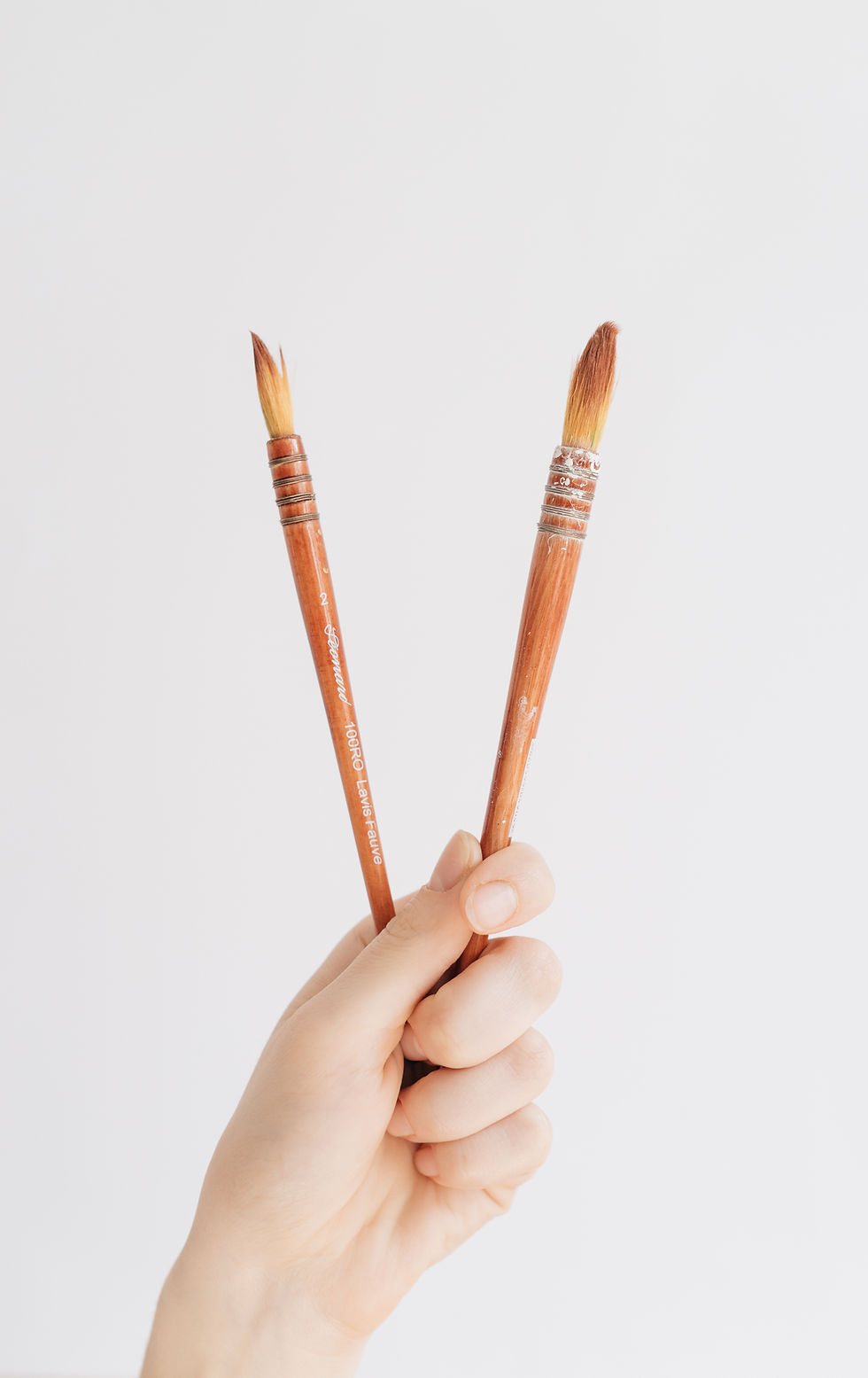Watercolour Gum Trees - essence of Australia
- Jenny Gilchrist
- Jun 13, 2017
- 3 min read
Hey there! If you enjoyed my last Watercolour post, you might like this one. It’s all about painting trees. As a massive tree fan, I’m always painting leaves and branches, and looking for the best way to translate the Australian Gum Tree to canvas – (or 300gsm cold pressed !)
Gum trees are my thang. Some people call them eucalypts. Whatever. In Australia we have well over 900 species of eucalypt and the smell of one is enough to send any expat, or far away Aussie traveller, into paroxysms of tears. So, whilst it might not be the pines of North America or the oaks of England, eucalypts have a beauty all of their own.
The lovely thing about painting trees is that if you go wrong (with the shape) no one is going to know! Yippeeee! as long as you get a few things right. And here they are.
Trees are not shaped like lollipops (unless you’re in Japan or Thailand where they prune trees to look like Dr. Seuss’s backyard.)
Trees have spaces between the branches for birds to fly through. Pretty sure that’s the reason, ha ha.
Trees aren’t always vertical.
Trees’ leaves are not usually ‘Sap green’, ‘viridian’ or some other tube green.
Trees have character.
Trees have varying textures, colours and light play on their trunks.
Trees sit on the ground, and rarely float in the air.
Trees have roots that almost always poke slightly out of the ground.

Jenny Gilchrist – Gum Gully © above, and © Pete's Trees, below.
So here’s my tips for great trees:

Never use tube greens, mix your own beautiful greens and let them bleed and blend on the paper. Use two blues and a yellow, or two yellows and a blue to give you some variance.
Decide where the light is coming from, and ensure the trunk reflects that.
Treat the ‘puffs’ of leaves as solid as well, and ensure the side facing the sun is lighter than the undersides.
let your colours bleed on the paper, to get some rough edges you can use a spray bottle, or soften the edges afterwards by rubbing over with damp brush.
Don’t forget to leave the lightest light on a tree that is the centre of attention of your painting, maybe leave white as a sparkle on the leaves, or the brightest reflection on a white trunk.
Let your ground reflect into the light colour trunks.
ensure your roots are partially exposed and that ‘debris’, rocks, grasses, sand, sits around the base to ‘anchor’ it to the ground.
remember branches cast shadows on eachother.
‘behind’ branches and leaves will be paler and bluer than the front ones.
Remember trees aren’t perfect either (lol), they’ll have some dead bits, some sappy bits, some crusty bark, some discoloured leaves. Use these as little bits of ‘jewellery’ on your painting, to draw the eye.
don’t let branches point straight out of the picture, unless there is something to balance them, and never let branches lead to a corner.
Make your trees different heights, widths, and leaning at different angles. Unless you’re in a ruler forest, they are rarely straight.
clump leaves together in irregular puffs, eucalypts are notorious for being a bit sparse.
© Scribbly - Jenny Gilchrist.
Some of the best gum-tree watercolour artists in the world are Hans Heyson, Albert Namatjira, Ellioth Gruner, David Taylor, and Neville Peterkin. All completely different, all with their own style and expertise. I suggest you look these guys up if you want to see some really beautiful trees. Mine absolutely pale in comparison. But I try.

Jenny Gilchrist – Coming Home ©

Jenny Gilchrist - Euroli Track ©









Comments